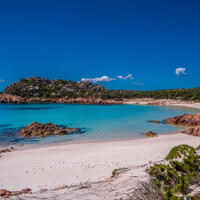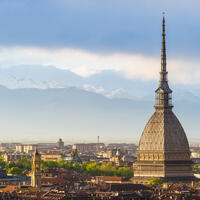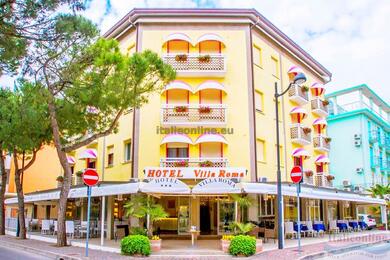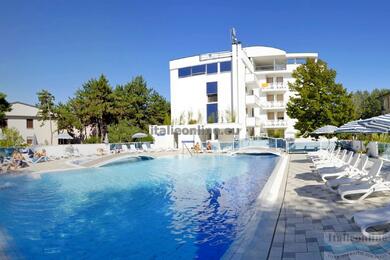They race to make traditional masks and invent various events linked to the carnival. The Carnival is never known in advance and is organised not only by the city, but also by private entrepreneurs and local theatre and dance groups.
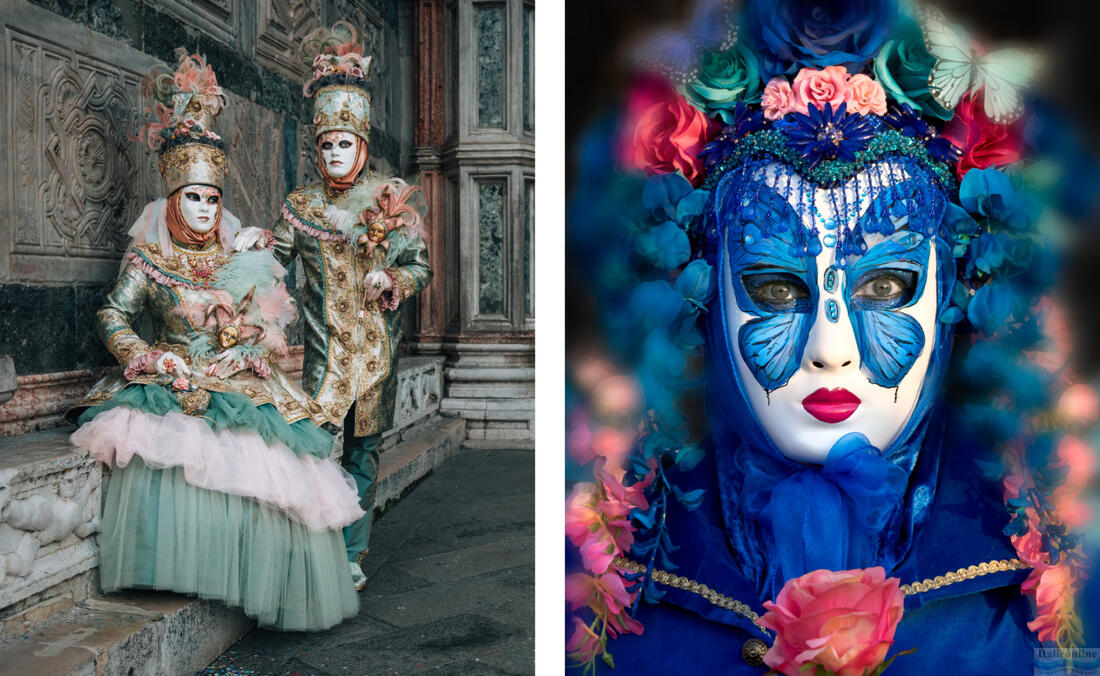
The carnival takes place in winter. The date of the carnival is always different, as it starts 10 days before Ash Wednesday and is the last revelry before the Easter fast, just like our carnival. However, also one of the most common interpretations of the origin of the word carnival is the Italian word carne (meat) and vale (away and or acquisition strength), the parting with meat dishes and further feasting before the long season of Lent. However, tradition has it that the origins of carnival come from pagan festivals, some see its origins in ancient Saturnalia.
The first written mention of Carnival in Venice dates back to 1268, but it is almost certain that Venetians were wearing masks as early as the 11th century. the reenactments of masks were very mischievous, originally lasting several months. Manners declined during them, and so the city began to defend itself against the wearing of masks with various decrees.
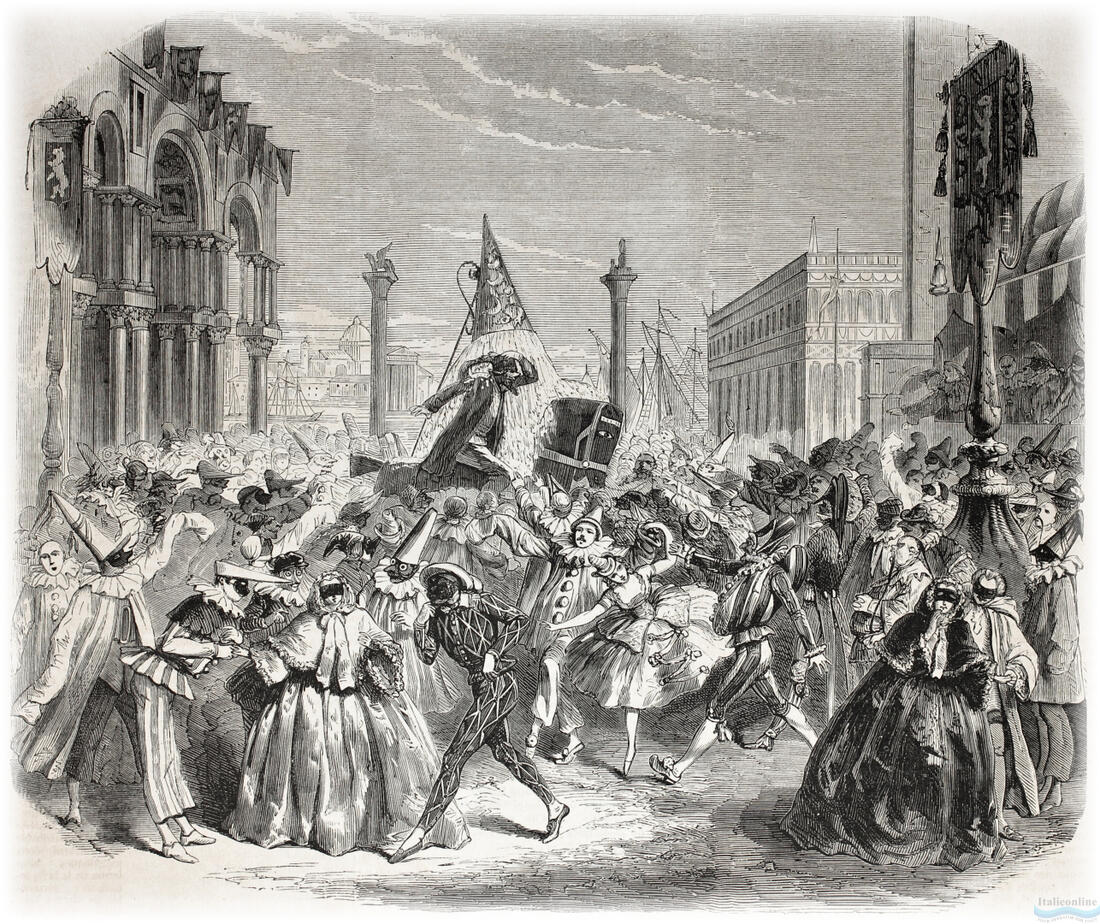
It was forbidden to wear fancy dress outside the carnival period, to enter churches and casinos. The wearing of masks was used to cover up various crimes and misdemeanours, as evidenced byfor example, a 1603 decree forbidding men to disguise themselves as women and to visit nuns in women's convents. It was repeatedly forbidden to wear sharp objects with the costume that could cause injury to others. Very severe punishments and fines were meted out for violating the prohibition - men were sentenced to 2 years in prison and fined 500 lire, women were subjected to public ridicule in St. Marco and four years' banishment from Venice. Women also had to pay a fine of 500 lire.
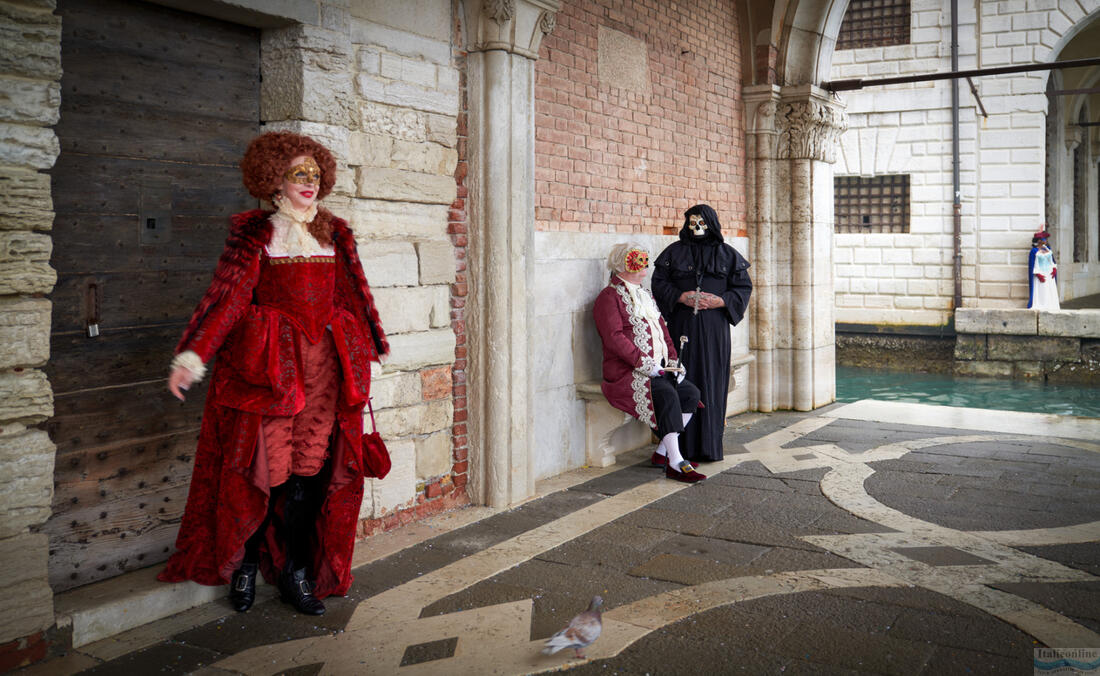
Even more severe restrictions were brought to the carnival by the rule of the Austrian monarchy after the fall of the Venetian Republic. the conquest of the city by Napoleon in 1797 marked the end of the carnival. The latter feared that rebellions might break out during the carnival and so banned it. It was only restored in 1979 and with it many of the original Carnival traditions.
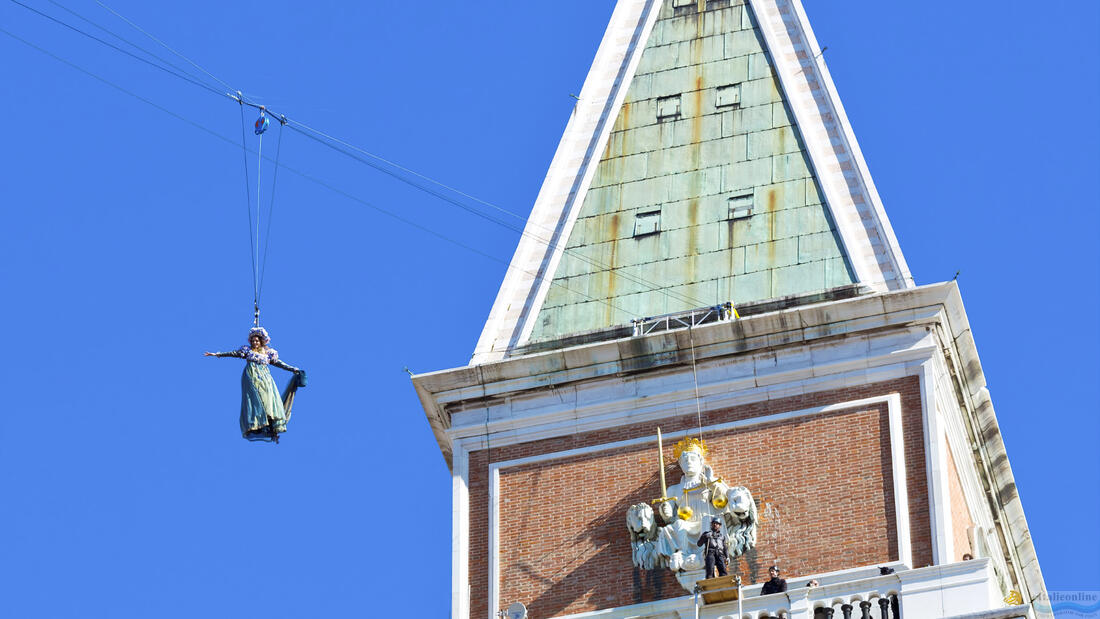
The carnival opens each year with the "flight of the angel", when a selected acrobat (today often a beautiful girl) floats on steel cables over St. Mark's Square. This tradition dates back to 1548, when one of the performers climbed to the roof of the bell tower and from there "flew" on a double rope to the tribune of the Doge's Palace. Today's Carnival also includes the traditional Commedia dell'Arte performances, which take place both in theatres and on the streets of the city. At the end of the carnival, the most beautiful mask is always chosen, and there is a grand ball and fireworks display in St Mark's Square. Each year the carnival has a different theme. In previous years, this has been the colours or the paths of Marco Polo, for example.
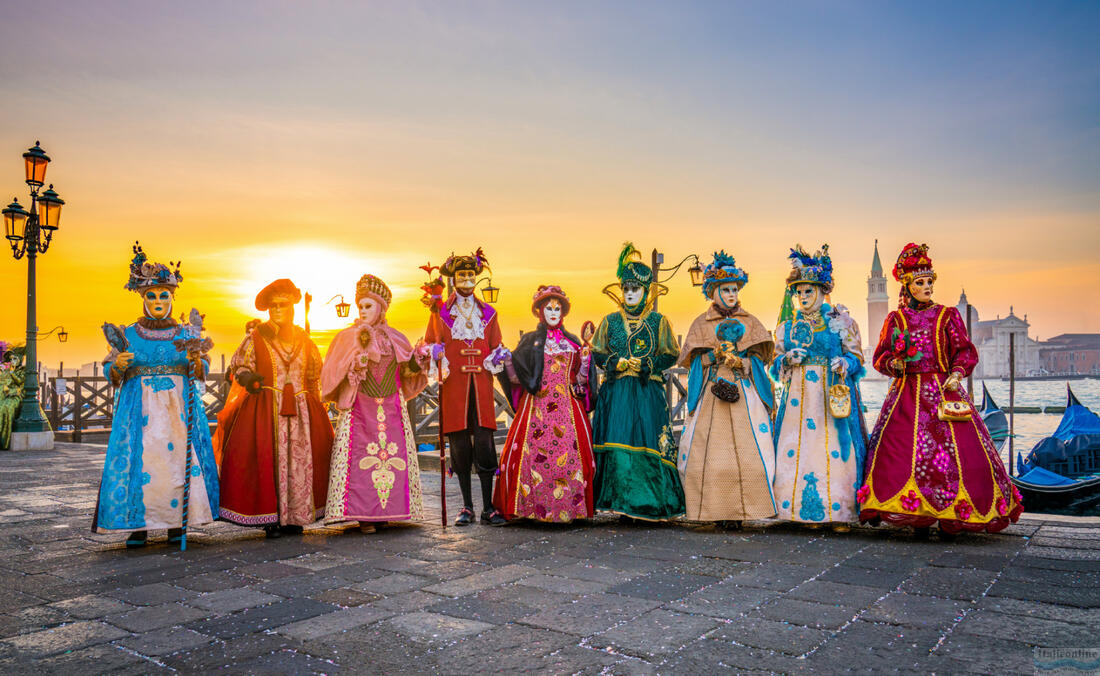
The traditional masks used at the Carnival are based on the aforementioned Commedia dell'Arte, which featured permanent characters with distinctive costumes. This is the origin of the famous Colombina, a mask covering only the upper half of the face and decorated with gold or silver, and the Arlecchino, a mask originally made of wood or leather. Its colour is black with a flat monkey nose. It represents a savage or a slave. Pantalone - the mask for the upper half of the face represents a sad old man with a long nose and slanted eyes. In addition to these figures, other traditional masks are sure to be seen at the carnival, such as: the Bautta - a square mask covering the whole face, with no mouth opening, usually accompanied by a three-cornered hat and cloak. Dottore - a bizarre white mask with a long beak and round eye holes, often accompanied by glasses. Volto - a white mask traditionally accompanied by a three-cornered hat, probably representing a ghost.
Masks are made in luxury workshops from expensive materials, but can also be bought in economical form for tourists. Mask makers are held in high esteem, in the past they even had their own guild. Some Venetian families have inherited the costumes for generations and are justly proud of them.
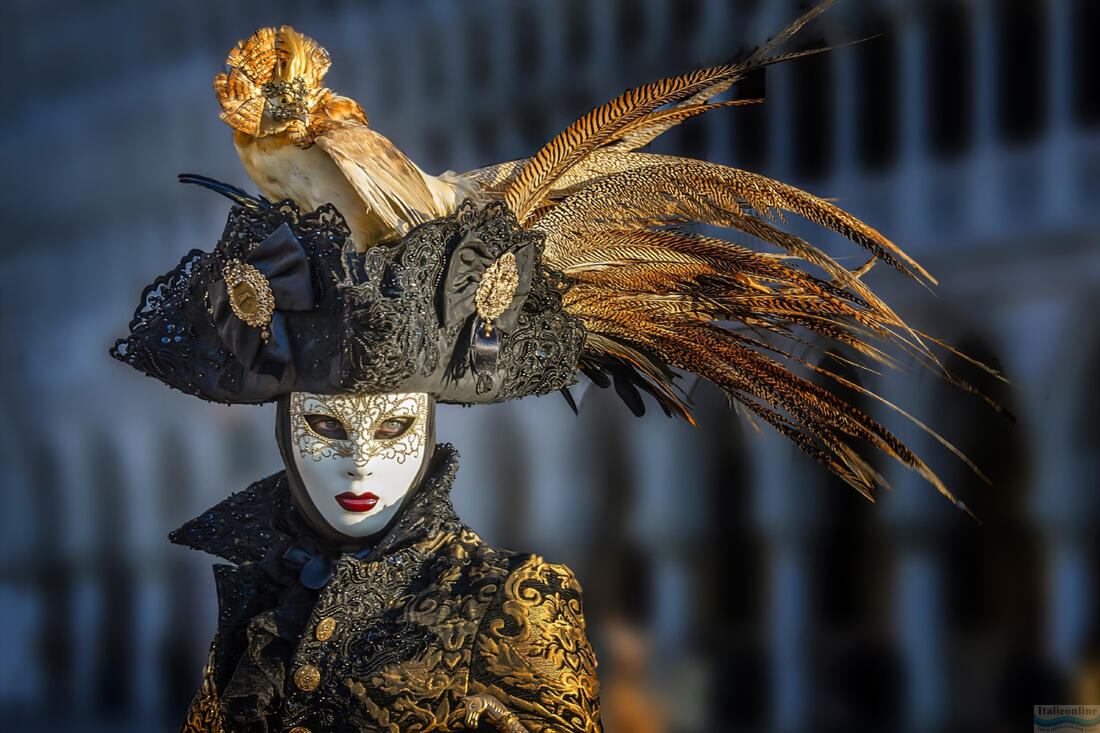
The main part of the carnival takes place on the Grand Canal and in St. Mark's Square, but a special magical atmosphere pervades the whole city. There's nothing like wandering through the winding streets between the tangle of canals and bridges. Here, too, it is possible to encounter the extraordinarily beautiful and distinctive Venetian masks or join in the exuberant revelry.



